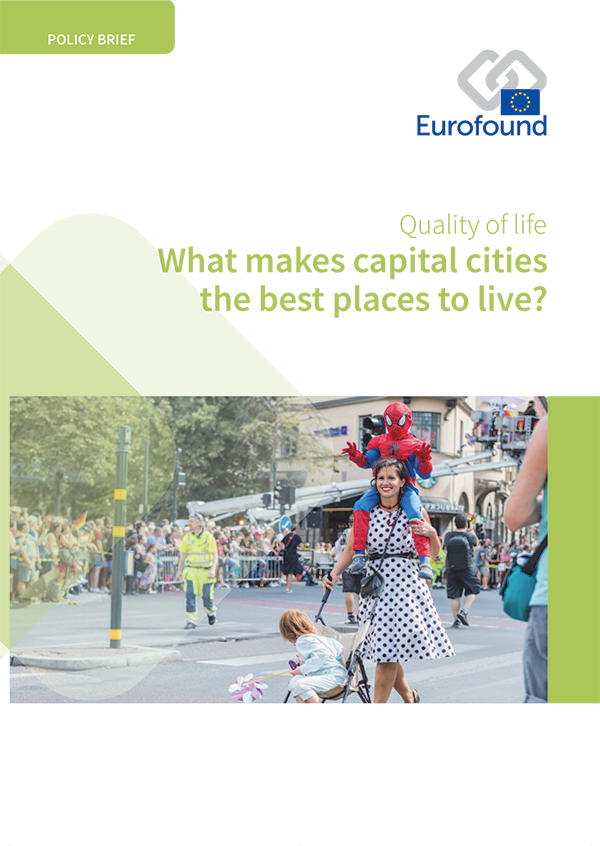
Daten zur Lebensqualität machen deutlich, dass in den meisten Ländern die Hauptstadt Vorteile gegenüber den Regionen außerhalb der Hauptstadt besitzt. Angesichts des anhaltenden Wachstums der Bevölkerung und der Konzentration von Ressourcen in den Hauptstädten wird in diesem Kurzbericht untersucht, welche Ursachen den Vorteilen, die Hauptstädte in punkto Lebensqualität bieten, zugrunde liegen. Sind diese Vorteile weitgehend auf spezifische demografische Gegebenheiten zurückzuführen, die von den Städten nach wie vor kultiviert und angezogen werden? Oder rühren sie vielmehr von den Möglichkeiten her, die große Städte aufgrund ihrer Größe und ihres Wirtschaftswachstums bieten können? Mit diesem Kurzbericht soll geklärt werden, weshalb sich die Politik bei der Förderung des wirtschaftlichen, sozialen und territorialen Zusammenhalts sowohl auf die Wirtschaft als auch auf die Gesellschaft konzentrieren sollte.
Key findings
In Europe, people living in the capital city generally have a better quality of life than people living in other parts of a country. On this basis, it seems that capital cities are indeed the best places to live.
For most countries, residents of the capital city score higher on life satisfaction on average than people living outside the capital.
Life satisfaction in a capital city for the most part is closer to the national average than to the averages of other capital cities. This finding suggests that, despite concerns that capitals increasingly operate independently of their nations, national-level factors are still important in shaping differences in well-being both between countries and between capital cities.
Capital cities have, by and large, larger proportions of people who report feeling resilient – able to cope during times of hardship – compared to other urban centres and rural regions in the same country. Some characteristics of city populations – such as a younger age profile and higher educational attainment – contribute to resilience, while others, such as housing insecurity, erode it. The findings suggest that some other latent factor, possibly related to opportunities for economic advancement and improving one’s living standards, could underlie the extra resilience that capital cities provide.
Capital city residents tend to be more satisfied with how democracy works in their country compared to the population outside the capital. This difference is largely associated with socioeconomic background, which on average is more advantageous in capital cities. Capital city residents also tend to have greater trust in national institutions and be more critical of local or municipal authorities than people in the rest of the country.
Tables
- Table 1: Selected indicators of quality of life – Capital cities and rest of country compared, 2016
Figures
- Figure 1: Life satisfaction scores: Capital cities compared to the rest of the country, 2016
- Figure 2: Low resilience (%): Capital cities compared to the rest of the country, 2016
- Figure 3: Factors behind likelihood of low resilience
- Figure 4: Satisfaction with democracy: Capital cities compared to the rest of the country, 2016
- Figure 5: Trust in national institutions and local authorities: Capital cities, other urban areas and rural areas compared, 2016
- Figure 6: Factors affecting satisfaction with democracy
- Figure 7: Factors affecting average rating of quality of public services
- Figure 8: Average daily commuting time (minutes): Capital cities compared to the rest of the country, 2016
- Figure 9: Housing insecurity (%): Capital cities compared to the rest of the country, 2016
- Number of pages
-
28
- Reference nº
-
EF18025
- ISBN
-
978-92-897-2049-6
- Catalogue nº
-
TJ-AR-20-001-DE-N
- DOI
-
10.2806/566449
- Permalink
Cite this publication
